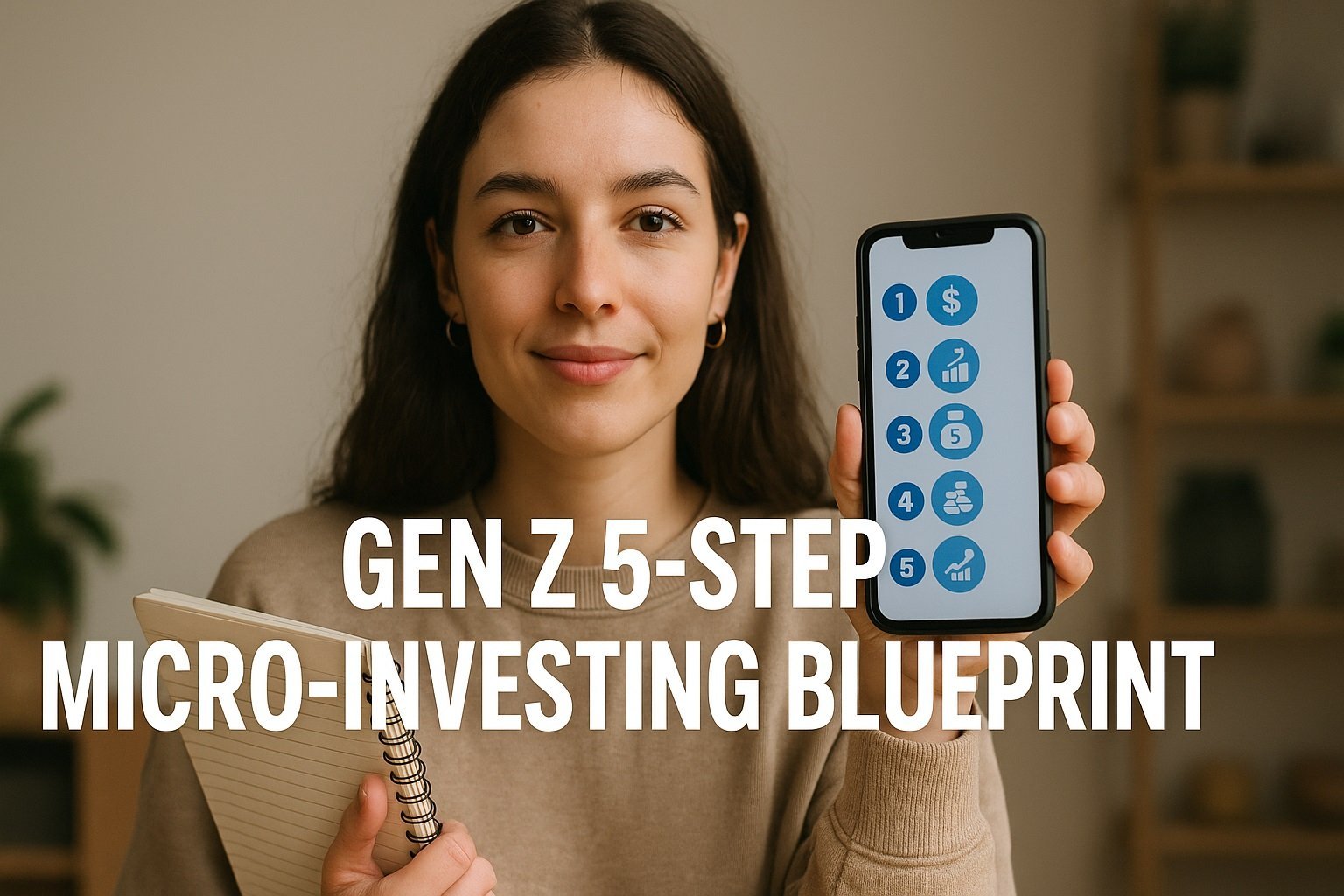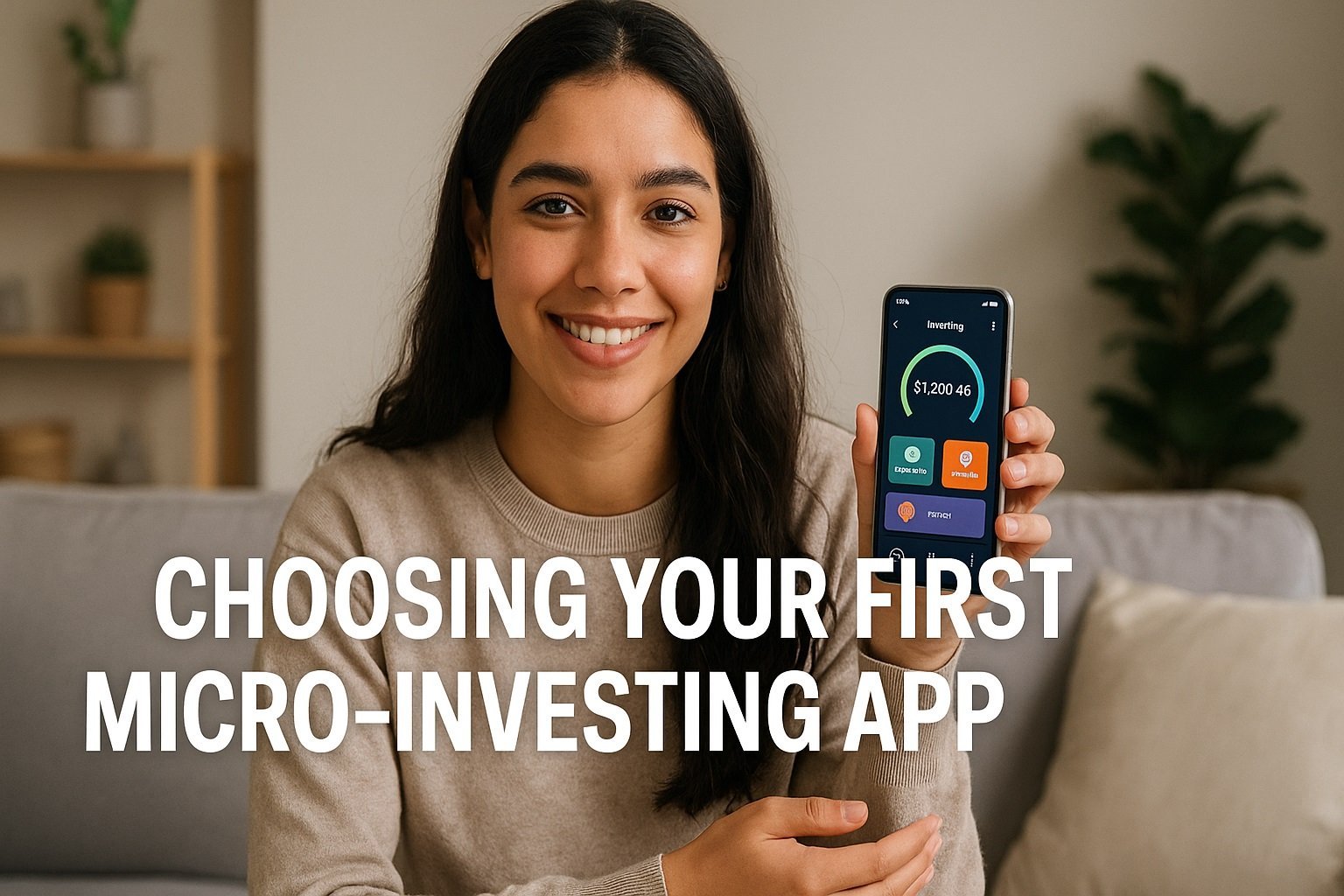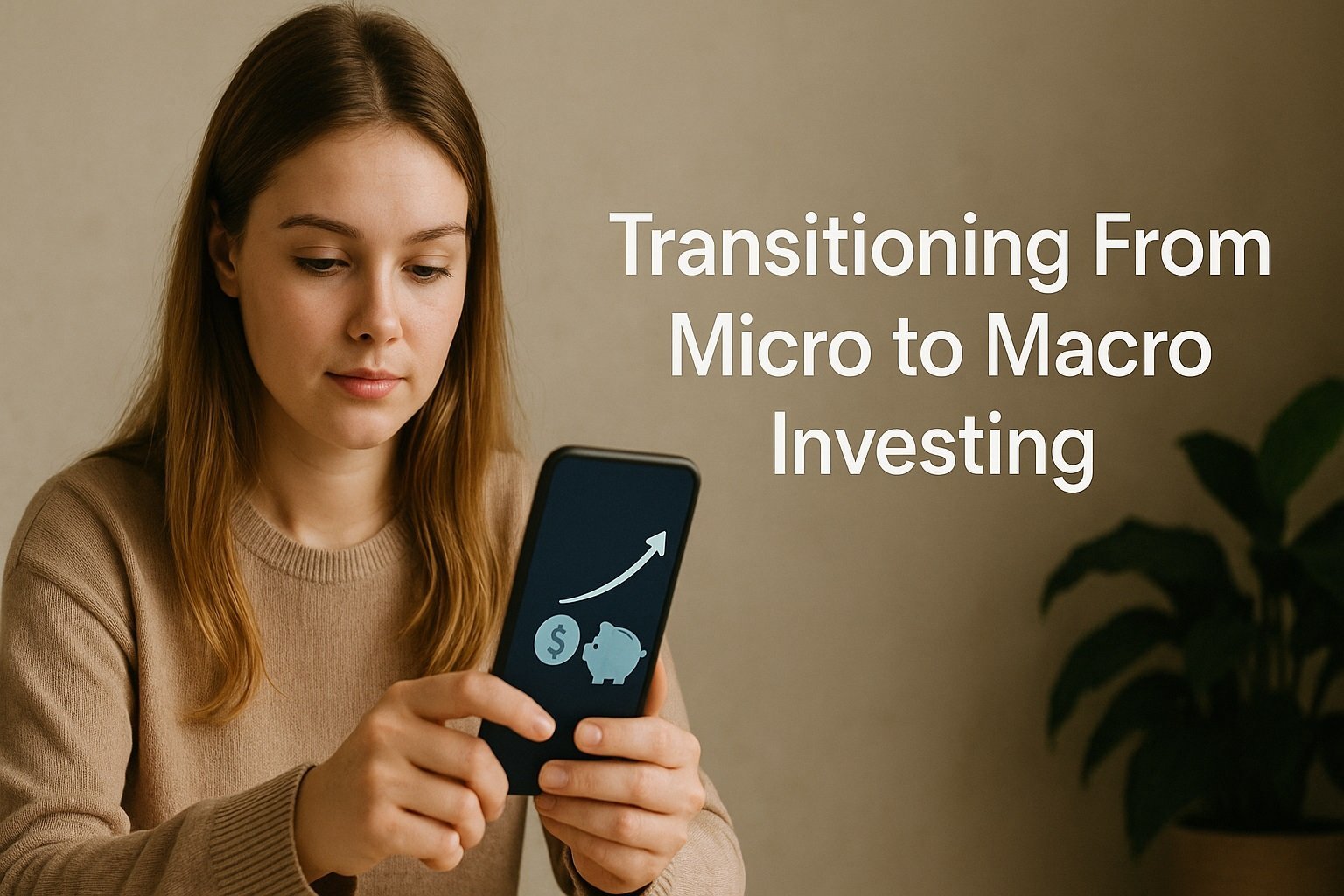
Gen Z faces high living costs and wage uncertainty but enjoys unrivalled access to fintech. Micro-investing, which lets you buy fractional shares or ETFs with as little as the coins left after a debit-card swipe, fits that reality perfectly. Surveys show the average Gen Zer starts investing at 19 and 65 % already use investing apps. By automating round-ups, setting modest recurring buys and harnessing compounding, you can turn pocket change into serious capital without sacrificing your daily latte. In this guide you’ll discover exactly how micro-investing works and see the wealth math that turns just a few dollars a week into five figures over time.
What Is Micro-Investing & Why It Works for Gen Z?
Micro-investing is all about breaking through the barrier of hefty account minimums by letting you invest tiny amounts in real time. Instead of waiting to save up hundreds or even thousands of dollars, you link your debit or credit card to a micro-investing app, which rounds up each purchase to the next dollar and channels the spare change into your portfolio. You can also set up scheduled transfers of just a few dollars on a weekly or monthly basis.

Because 90 % of Gen Z transact by phone, everything happens in an app you already swipe through dozens of times a day. With a tap you can:
-
Own fractional shares of companies like Apple or Tesla
-
Access diversified ETFs without a big lump-sum investment
-
Choose prebuilt “theme” portfolios or build your own mix
That low barrier to entry builds confidence. Instead of feeling that investing is only for the wealthy or the financially savvy, micro-investing turns everyday spending into a habit that grows your future net worth, one coffee cup at a time.
The Wealth Math: How $5 Weekly Compounds to Five Figures
It’s one thing to know micro-investing works in concept and another to see how small sums add up. Let’s compare simple interest versus compound interest on a $5 weekly investment over 10, 20 and 30 years, assuming a 7 % annual return.
| Time Horizon | Simple Interest Total | Compound Interest Total |
|---|---|---|
| 10 years | $2,600 | $4,538 |
| 20 years | $5,200 | $13,216 |
| 30 years | $7,800 | $30,776 |
Simple interest just multiplies your contributions by the interest rate each year, whereas compound interest reinvests earnings so your money earns on itself. You can see that at the 30-year mark, the compounding effect more than triples what you would get with simple interest.
Data from FINRA and the CFA Institute highlight how starting early is the biggest edge an investor can have. By beginning in your late teens or early twenties, you give compounding decades to work its magic. Even if you boost your weekly contribution by a dollar or two as your income rises, that extra bit of capital could translate into thousands more down the road. In other words, those five bucks a week aren’t just spare change – they’re the foundation of a future five-figure portfolio.
Gen Z 5-Step Micro-Investing Blueprint

1. Automate spare-change round-ups (Acorns/Greenlight)
First, pick an app that links to your everyday spending and automatically rounds up each purchase. With Acorns or Greenlight, a $2.75 coffee becomes $3.00, and that extra $0.25 heads straight into your investment account. It’s a seamless way to seed your portfolio without thinking twice. Over weeks and months, those cents really start to add up.
2. Set a non-negotiable weekly micro-deposit ($5–$20)
Next, block out a small sum—say $5 to $20—on a set day every week. Treat it like a bill you have to pay yourself. Automating this transfer means you never skip it, even if life gets busy. If you land a side gig or get a bonus, consider bumping that amount up by a couple of dollars to accelerate your progress.
3. Pick diversified, low-fee ETFs & fractional shares
Avoid the temptation to chase single hot stocks. Instead, choose broad market ETFs with tiny expense ratios or fractional shares of blue-chip companies. Diversification reduces risk and keeps costs in check. Many micro-investing platforms let you select prebuilt portfolios or customize your own mix of U.S. large-cap, international, and bond ETFs.
4. Reinvest side-hustle windfalls & cash-backs
Whenever you earn extra cash—whether it’s from freelancing, selling old gear, or credit-card cash-back—channel a chunk of that windfall into your micro-investing account. Reinforcing the habit of saving unexpected income turns every dollar you earn into a growth opportunity.
5. Review quarterly; raise contributions with every pay-rise
Every three months, log in and glance at your asset mix. If one fund drifts too far from your target, tweak your allocations. And each time you get a raise, incrementally boost your weekly deposit. That way, your savings rate climbs alongside your income, keeping your long-term goals on track.
Choosing Your First Micro-Investing App

Picking the right app comes down to fees, features and whether you want crypto alongside stocks and ETFs. Here’s a quick snapshot:
| App | Monthly Fee | Key Features |
|---|---|---|
| Acorns | $1–$3 | Automatic round-ups, diversified portfolios |
| Stash | $3 | Themed ETFs, fractional shares, educational tips |
| Robinhood | $0 | Commission-free trading, crypto access |
| Public | $0 | Fractional shares, community-driven insights |
Each app has its own vibe. Acorns is perfect if you want truly set-and-forget investing. Stash adds learning modules if you like guided direction. Robinhood and Public let you trade without fees and tap into crypto markets directly. In fact, about 44% of Gen Zers kicked off their investing journey with crypto, so if digital coins are your thing, Robinhood or Public might be the best fit.
Risk Management for Tiny Portfolios
When you’re working with small sums, protecting what you’ve saved is just as important as growing it. Start by building a basic emergency fund—aim for at least $500 to $1,000 in a high-yield savings account—before you funnel every spare cent into micro-investing. This safety net means you won’t be forced to sell investments at a loss if an unexpected expense pops up.

Diversification is your next line of defense. Even with a portfolio of just $50 or $100, spread your money across at least two or three low-fee ETFs or fractional shares in unrelated sectors. That way, a slump in one industry won’t wipe out your entire tiny nest egg. Many micro-investing apps offer prebuilt “core” portfolios that automatically balance stocks and bonds for you, which keeps you from putting all your eggs in one basket.
Fee drag—those small account and transaction charges—can quietly erode gains when your balance is low. A $3 monthly fee on a $50 account eats up 6 % each month before your investments even move. Look for platforms with free plans or fees under $1 per month, and steer clear of account minimums that trigger extra costs.
Finally, resisting meme-hype will save you from emotional trading mistakes. Viral tokens and “hot stock” chatter can be tempting, but sudden price swings often lead to big losses. Stick to your original asset mix and contribution plan; over time, steady, disciplined investing beats chasing the latest internet fad.
Level-Up: Transitioning From Micro to Macro Investing
Once your micro-investing habits are humming and you’ve built a few hundred dollars, it’s time to graduate into more traditional investing vehicles. First, opening a direct brokerage account gives you access to a wider range of stocks, ETFs and bonds at lower per-trade costs. Look for brokers with no account minimums, free trades and intuitive mobile dashboards so your Gen Z-friendly fintech comfort zone carries over.

Next, prioritize tax-advantaged retirement accounts. If your employer offers a 401(k) match, contribute enough to capture the full match—it’s free money you don’t want to leave on the table. If you’re freelancing or side-hustling, consider opening a Roth IRA. Your contributions grow tax-free and withdrawals in retirement aren’t taxed, which is ideal when you expect higher future income.
Finally, robo-advisers mix the best of both worlds: automated portfolio management with lower fees than many human advisors. You answer a few questions about risk tolerance and time horizon, and the robo-adviser allocates, rebalances and harvests tax losses for you. Many platforms even integrate with your micro-investing accounts so you maintain one cohesive investing ecosystem.
By layering direct brokerage, IRAs or 401(k) and robo-advisers on top of your spare-change strategy, you’re charting a clear path from pocket change to portfolio power.
Case Snapshot: How Round-Ups Built a $2.4 Billion User Portfolio
Raiz Australia launched in 2016 with a simple promise: spare change from everyday purchases can become serious savings. By linking to users’ debit and credit cards, Raiz automatically rounded every transaction up to the nearest dollar and invested the difference into a diversified portfolio of ASX-listed ETFs. That seamless experience—no minimum balance, no need to think about it—resonated with younger Australians. Within a few years, Raiz grew its assets under management to over $2.4 billion, serving more than one million active users. This case proves that tiny, automated contributions really can scale when combined with a user-friendly app and clear, ongoing education about the power of compounding.
Take-away Checklist
-
Link an app to your card for automatic round-ups that require zero extra effort.
-
Set a weekly deposit of $5–$20 as non-negotiable “self-pay.”
-
Choose low-fee ETFs or fractional shares to keep more of your returns.
-
Reinvest windfalls like cash-back or side-hustle earnings.
-
Monitor quarterly and rebalance to maintain your target mix.
-
Increase contributions with each pay rise to turbo-charge compounding.
FAQ Section (Targeting People-Also-Ask)
| Question | 1-Sentence Answer |
|---|---|
| What is micro-investing and how does it work? | It lets you buy fractional shares or ETFs automatically with very small amounts, often by rounding up everyday purchases. |
| Is micro-investing safe for beginners? | It’s as safe as the underlying assets and the brokerage; choose SIPC-insured, low-fee platforms and keep a diversified mix. |
| How much money do I need to start? | Most apps allow $0–$5 account minimums, so a single coffee’s cost is enough. |
| Can micro-investing really build meaningful wealth? | Yes – consistent $20 weekly deposits earning 7 % could exceed $100 k in 25 years thanks to compounding. |
| Which micro-investing app is best for Gen Z? | Acorns for full automation, Stash for education, Public or Robinhood for social features – compare fees and UX. |
| What fees should I watch out for? | Flat monthly platform fees, ETF expense ratios and crypto transaction spreads can erode small balances. |
| Should I include crypto in my micro-portfolio? | Only if you understand the volatility and cap exposure (for example, keep it under 10 % of your portfolio). |

























